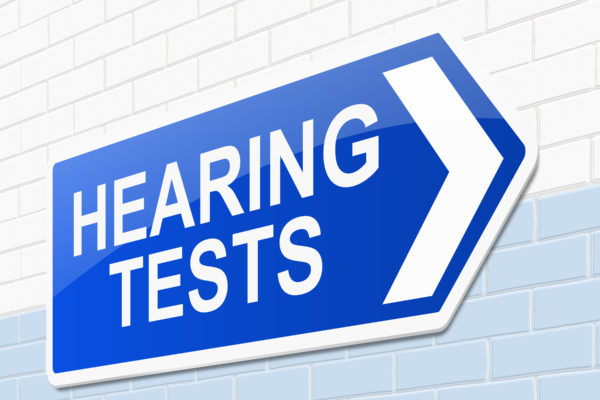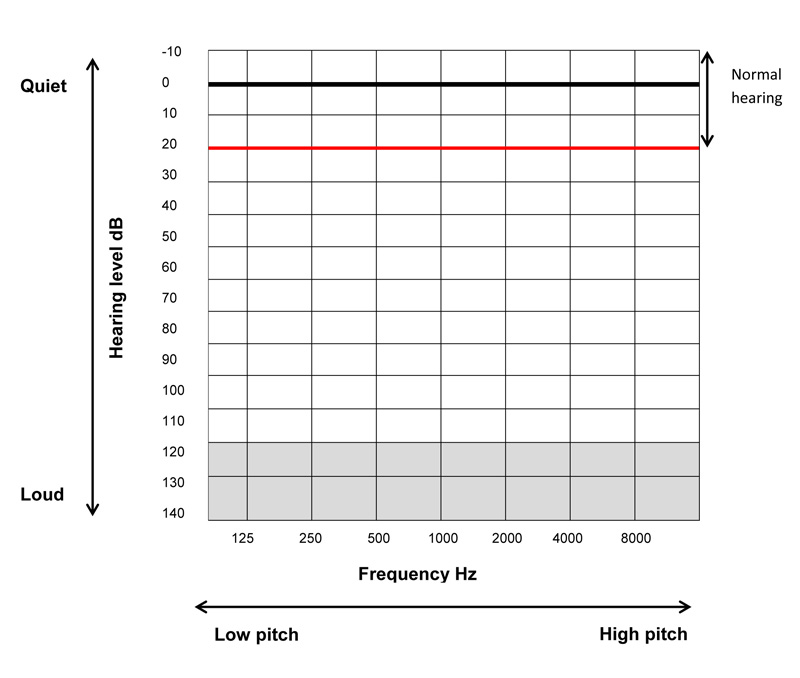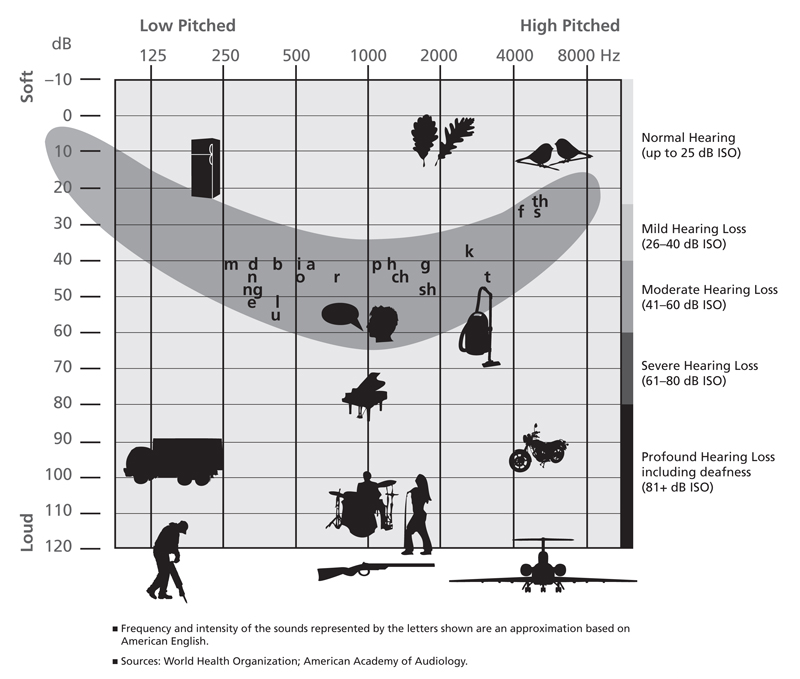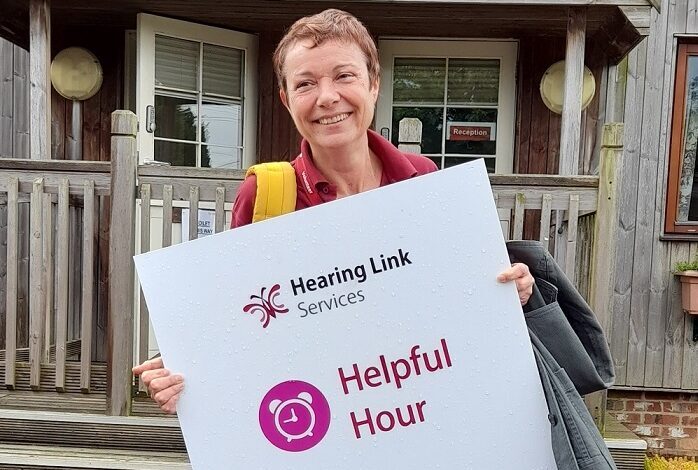What is a hearing test?

Hearing test definition
A hearing test provides a measurement of the sensitivity of a person’s hearing across the full range of speech. The test will measure the quietest sound that can be heard several points across the speech range – this hearing test is termed an audiogram.
The hearing test will be performed by an audiologist, whether NHS or on a private basis the basics of the test should remain the same as described below
Getting the most from your appointment
At your appointment, you should be prepared to talk about all of the issues you have with your hearing (e.g. communicating, confidence, how you feel about your hearing) and whether you also experience any other problems associated with hearing loss (e.g. tinnitus). It’s important to talk openly about the different situations where you find it difficult to hear clearly (e.g. in noisy surroundings, in groups).
It might be useful to take someone else with you to this appointment. There is often a lot to remember and two heads are better than one!
Watch our video below for more insight to audiology appointments and how to prepare.
What happens in a hearing test?
The audiologist performing your hearing test should introduce themselves and explain what is going to happen and the order of things to be done.
They will want to have a look into your ears to ensure there is no blockage (wax) or any reason the hearing test cannot be performed.
They will then want to take a brief history of your hearing, when you noticed problems, did they occur gradually or suddenly, have you had any infections or injury that may have caused the hearing difficulties and the problems you have had to deal with.
The audiologist will then want to test your hearing by performing an audiogram. The test will take about 20-30 minutes. You will be played a series of sounds through headphones and be asked to respond in some way that you have heard the sound normally by pressing a button every time no matter how quiet or faint.
This is done in one ear and then the other, as the results can be different. Depending on the result there may be other tests required, but this will be explained at the time.
Your hearing test results
Sound is measured in two key ways:
- volume or level – measured in decibels (dB)
- pitch or frequency (whether it’s high or low) – measured in hertz (Hz)
Your audiologist will probably refer to these two things when they explain the results of your test to you. If you do want to a copy of the test, it’s best to ask on the day.
Audiograms
Hearing tests are usually carried out in a quiet environment which is sound damped from external noise. The person whose hearing is being tested listens to sounds transmitted by an audiologist and presses a button to signal when they have heard something. The results of the test are plotted on an audiogram.
Volume or loudness which is measured in decibels (dB). Sounds become louder from the top down – softest near the top of the graph.
Pitch or frequency which is measured in hertz (Hz). Frequency goes from low (125Hz) on the left to high (8000Hz) on the right – similar to a piano (low notes on the left, higher to the right).
Normal hearing is when the softest sounds heard are between -10 and 20 dB. If the sounds are louder than 20 dB and you still can’t hear them, then there is a hearing loss. The further down the chart the line of your hearing test comes, the more of a hearing loss.
Mild hearing loss is between 21dB and 40dB. You often have difficulty following speech especially in noisy situations. This type of loss is often noticed by family first rather than yourself.
Moderate hearing loss is between 41dB and 70dB. You often have difficulty following speech and other quiet noises.
Severe hearing loss is between 71dB – 90dB. You are unable to hear speech even in quiet surroundings and do not hear general noises such as traffic unless it’s loud.
Profound hearing loss is greater than 90dB. You are unable to hear most sounds unless really loud.
Thresholds
In the audiology clinic, testing is done with headphones; we call them ‘air conduction thresholds’ as the sound must travel through the air of the ear canal to be heard. This process allows the audiologist to test the full hearing system.
Alternatively, hearing can be tested using a bone conductor – a device that rests on the bone behind the ear (held in place by a metal band stretching over the top of the head). This bone conductor transmits sound vibrations through the bones of the skull directly to the inner ear. This process allows the audiologist to test the hearing of the inner ear directly.
The audiologist would compare the air conduction and bone conduction results to determine where any hearing loss occurs.
The threshold of hearing at any tone/frequency is the quietest sound heard – this is what is recorded on the audiogram for each ear air conduction and bone conduction.
Speech banana
A useful way to look at the audiogram chart is with a ‘speech banana’ superimposed on it. The speech banana is so called because of its shape. It represents the level/intensity and tone/frequency of sounds of speech in language, which when placed on the audiogram, forms a banana like shape.
The chart below shows a speech banana superimposed on an audiogram chart with the different letters of speech and also where other common noise occurs.
Image: Thanks to Phonak
Speech audiogram testing
Most audiologists will now also perform a ‘speech audiogram’ to see how well you hear speech. This will normally involve getting you to listen to speech (either single words or very short sentences) through headphones or a loud speaker, and asking you to repeat exactly what you have heard.
This can be done in the presence of background noise or in quiet surroundings depending upon the test procedure used.
This test gives the audiologist information as to what can be achieved with amplification and what level of improvement could be made to your hearing.
Screen your own hearing
There are several ways to check your own hearing from the comfort of your own home.
Whilst these screening tests are useful, they should not be taken as a diagnostic test of your hearing and if in any doubt to discuss the results with your GP or local audiologist.
Online screening hearing tests are available from the majority of hearing aid manufacturers and major suppliers or dispensers. They can be found by typing ‘Online hearing test’ into search screens.
Alternatively a telephone screening test is available via RNID. However, please note it does not matter which way a screening test is performed it is only a screen, and needs to be considered as such.
Watch Kim having a hearing test
Thanks to Hear-it
Video explaining sound and audiograms
Thanks to MED-EL
Making the NHS accessible
The new Accessible Information Standard came into play in August 2016 across England. Its aim is to make sure that all organisations who provide NHS or social care make their information accessible for all people in a way they can understand and by providing any communication support they need.
More information about the Accessible Information Standard can be found here: https://www.england.nhs.uk/ourwork/patients/accessibleinfo/
Webpage updated: August 2023


